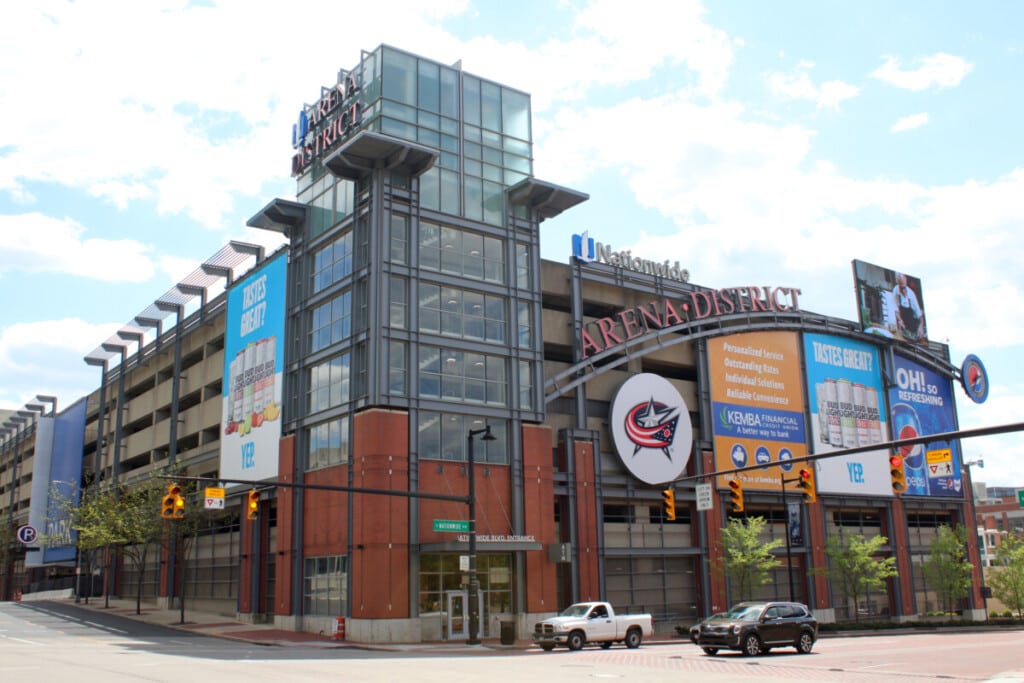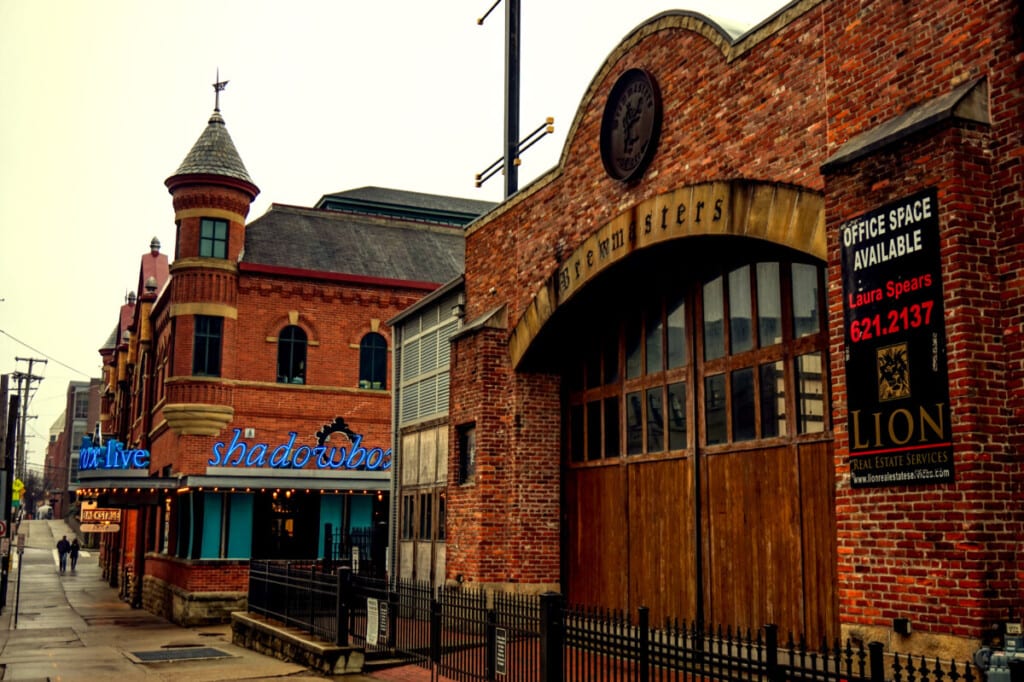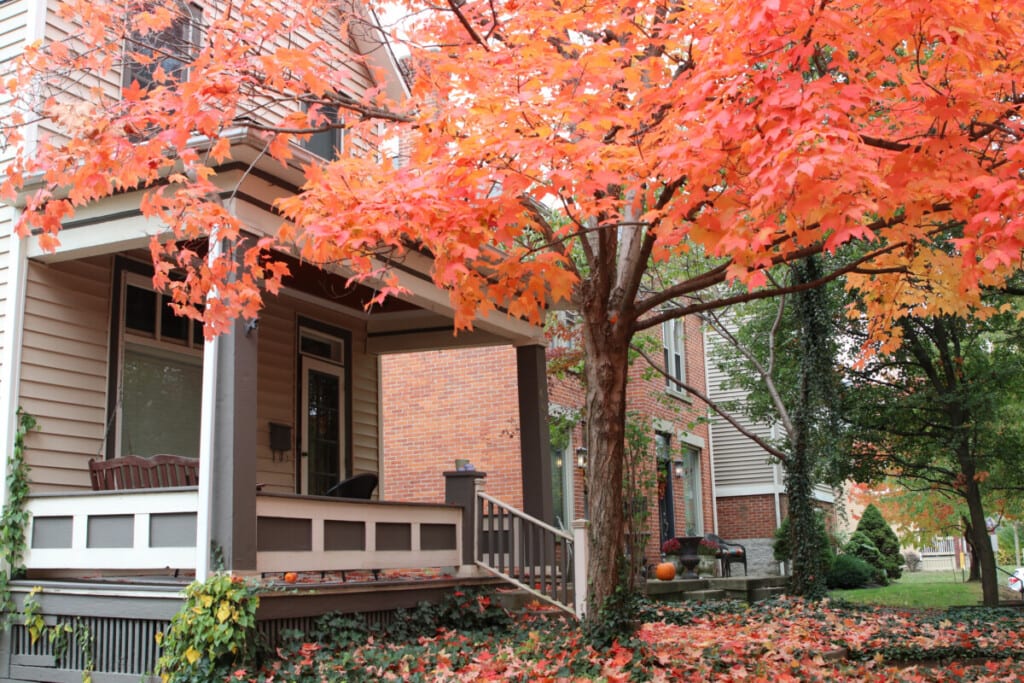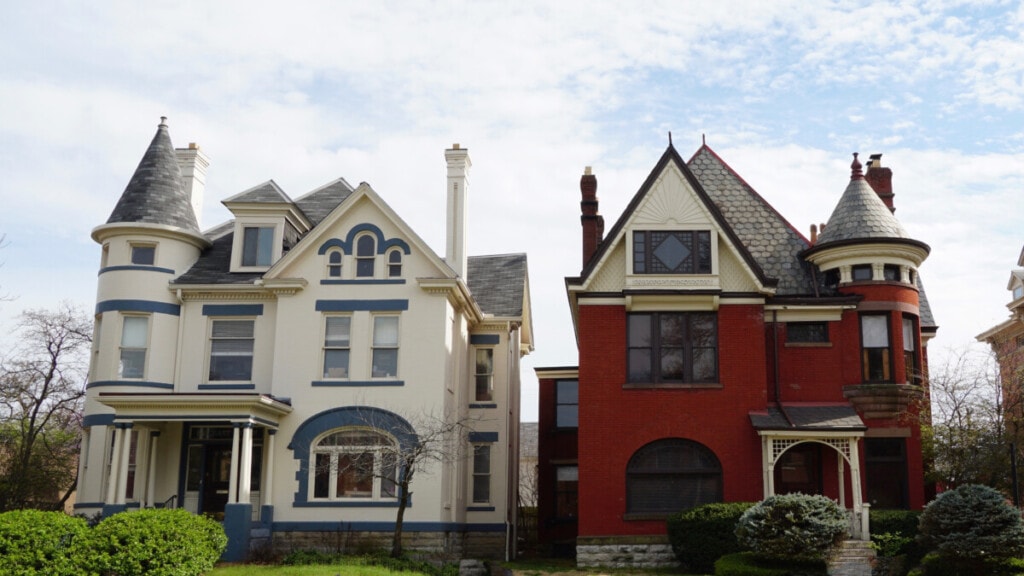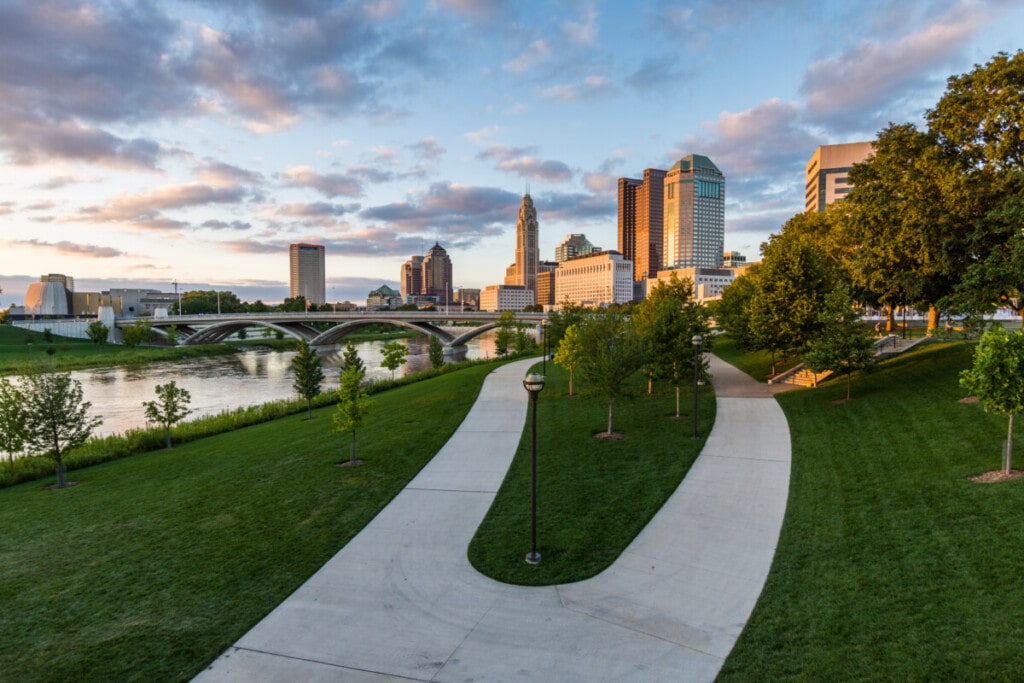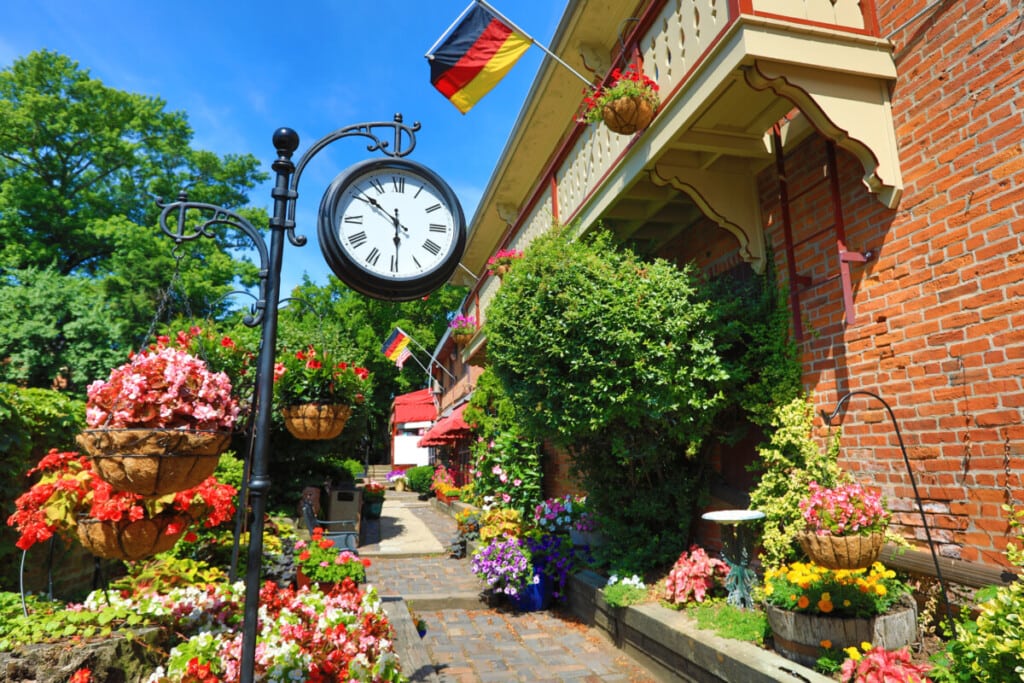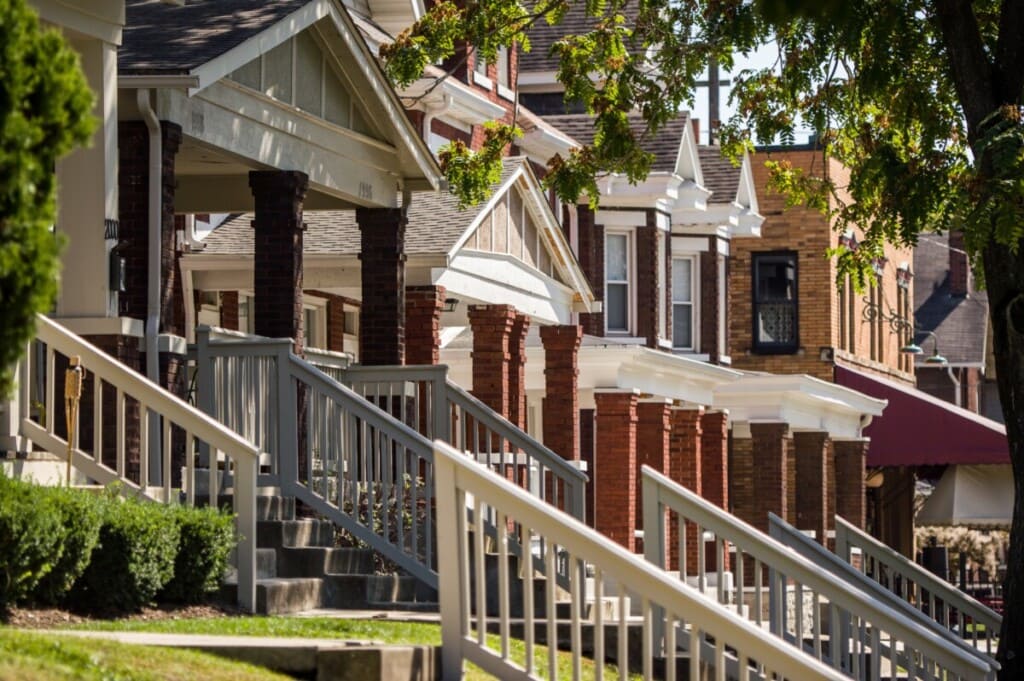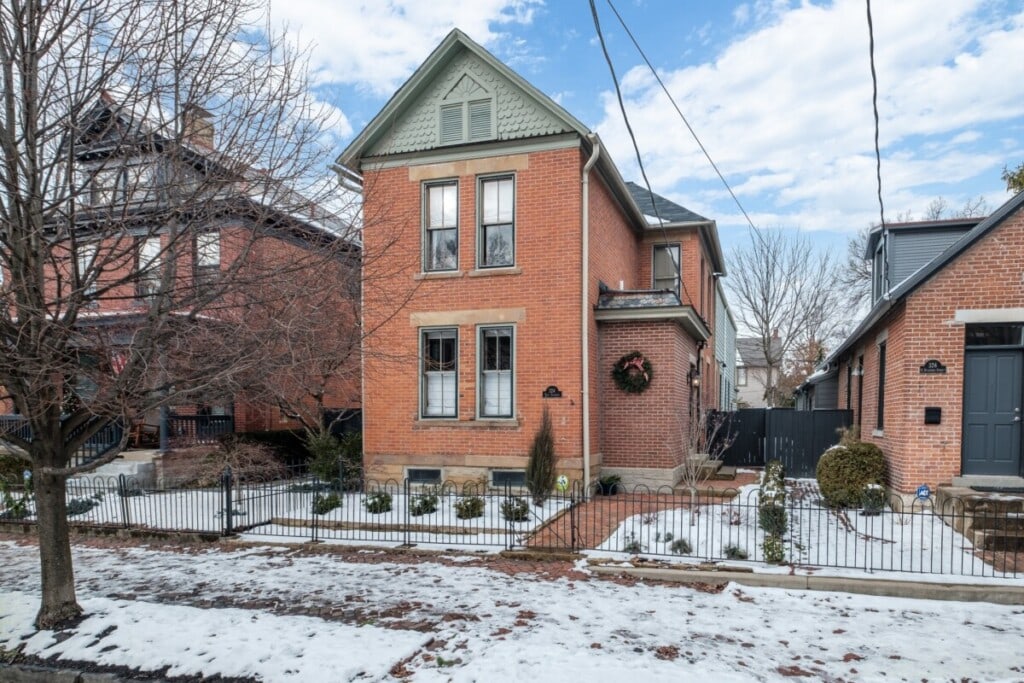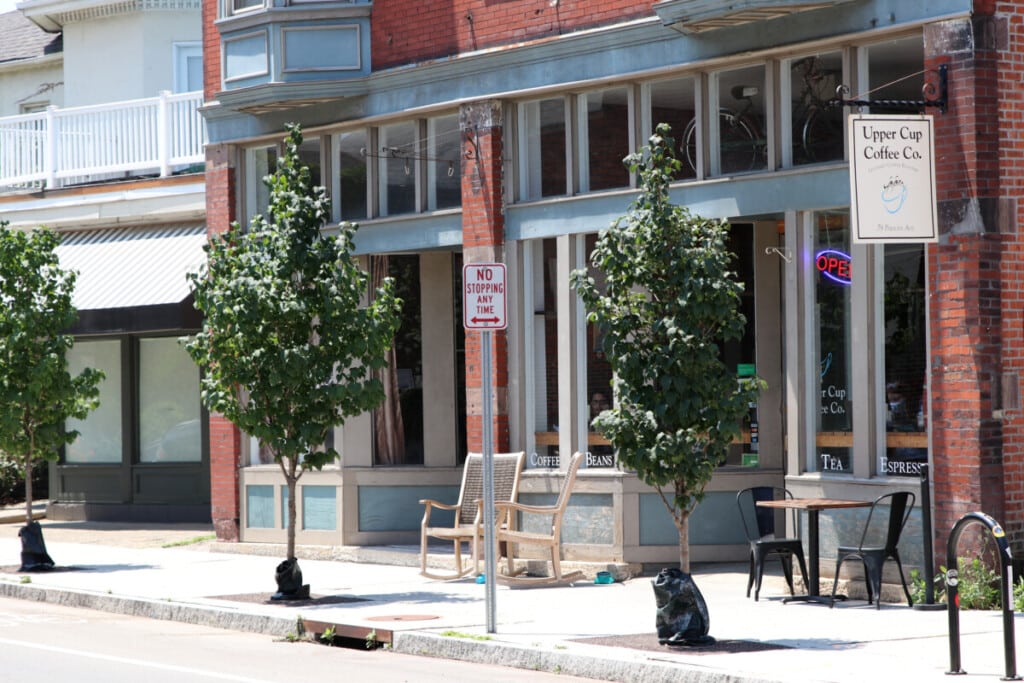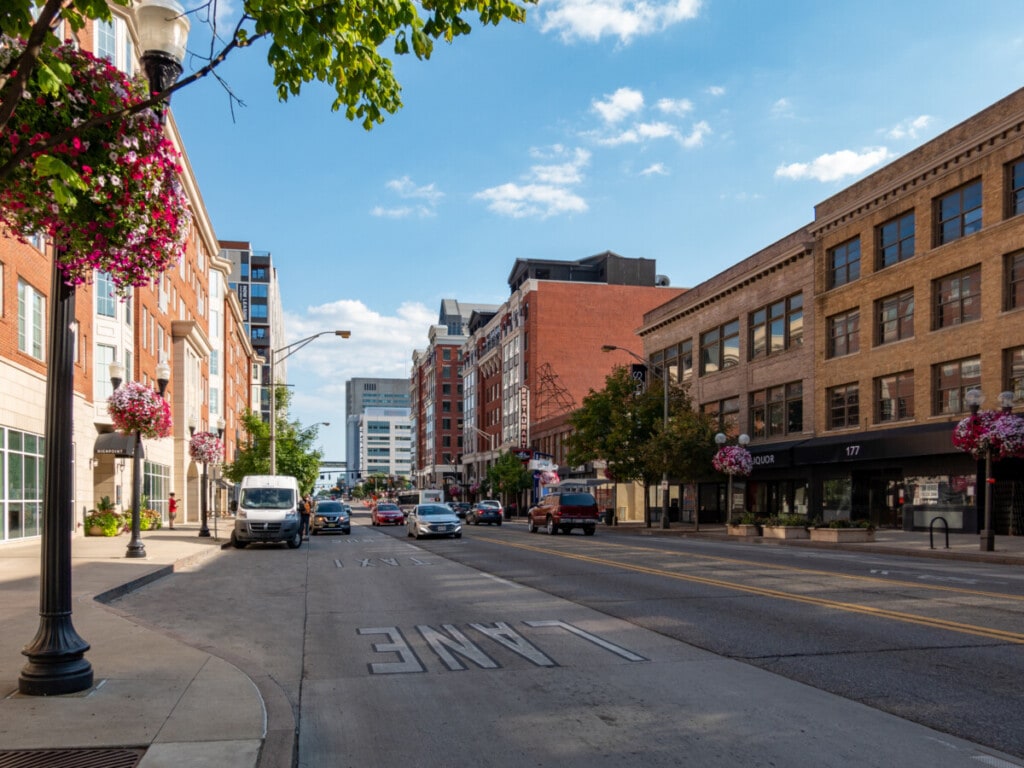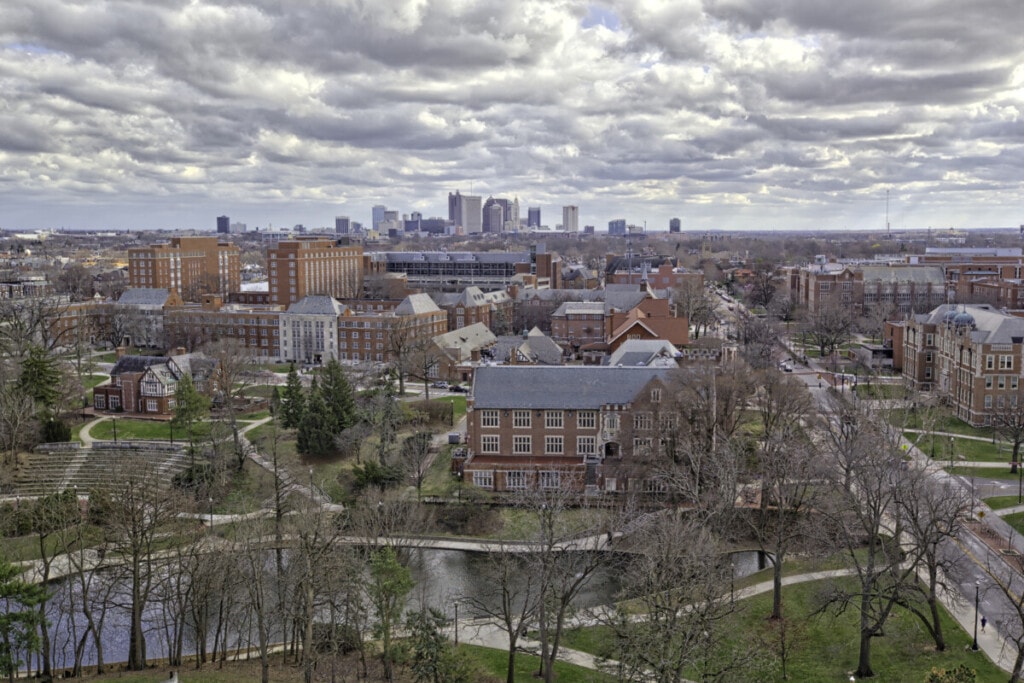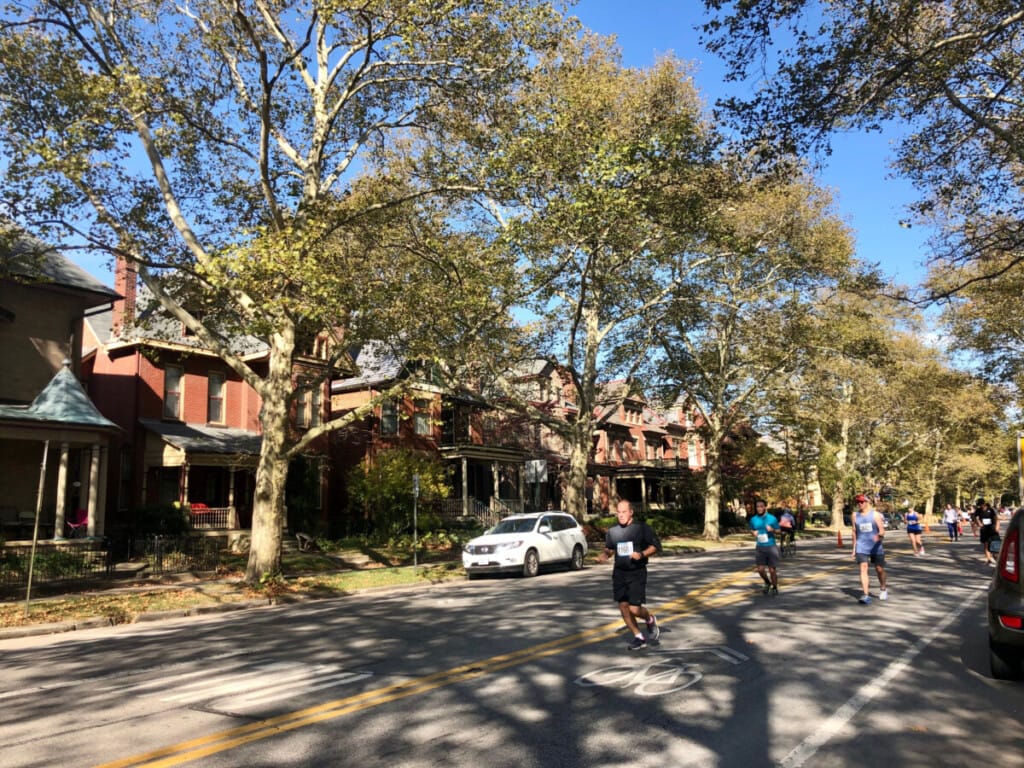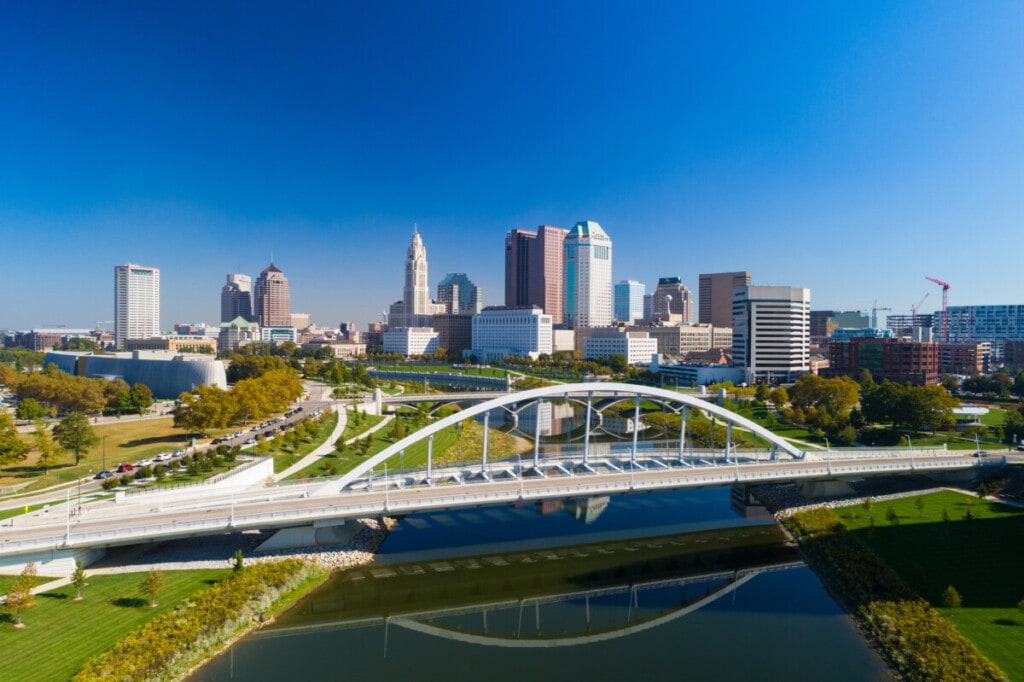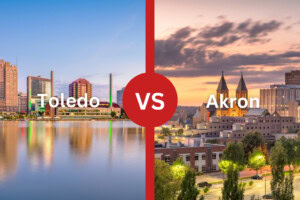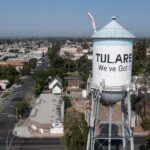If you’re considering a move to Ohio, you may be debating between renting an apartment in Cincinnati or buying a house in Columbus. Both cities are filled with Midwestern charm and offer diverse career opportunities and cultural experiences. Cincinnati is known for its historic architecture and scenic views along the Ohio River, while Columbus, as the state capital, offers a bustling arts scene and a growing tech sector. Choosing the right city to call home can be challenging with so much to offer.
In this Redfin article, we’ll explore key factors like real estate prices, job prospects, cost of living, and cultural experiences in both cities, helping you decide which city might be the best fit for your next move.

Housing in Cincinnati vs Columbus
Housing in Cincinnati
Cincinnati’s housing market offers a mix of historic charm and modern living, with a variety of neighborhoods to fit different lifestyles. Buyers can find options ranging from classic row houses in Over-the-Rhine to spacious single-family homes in neighborhoods like Hyde Park. The cost of housing in Cincinnati is generally affordable, providing options for both urban and suburban living. Cincinnati’s blend of history, green spaces, and affordable homes make it an appealing choice for residents seeking character and value.
- Median home cost: The median home sale price in Cincinnati is around $260,000, offering ample space and options at budget-friendly prices.
- Average rental cost: The average rent for an apartment in Cincinnati is approximately $1,635 per month, providing a range of affordable choices in central and suburban areas.

Housing in Columbus
Columbus’s real estate market is one of growth and diversity, with options ranging from downtown condos to suburban homes in Columbus neighborhoods like Dublin and Upper Arlington. Columbus is known for its modern apartments, townhomes, and a versatile housing market. The city’s development is supported by a strong tech and business sector, making it a popular location for newcomers seeking variety and affordability.
- Median home cost: The median sale price for a home in Columbus is around $275,000, with a wide range of affordable options across various neighborhoods.
- Average rental cost: Renting an apartment in Columbus averages around $1,402 per month, making it accessible for a variety of budgets.

Cost of living in Cincinnati vs Columbus
The cost of living in Cincinnati is approximately 2% higher than in Columbus, though both cities remain affordable options in Ohio. Differences arise in areas like utilities, groceries, and transportation, with Columbus’s larger population and infrastructure demands slightly increasing certain costs.
1. Utilities
Utilities in Cincinnati are about 1% more expensive than in Columbus. Columbus’s denser urban areas and older infrastructure can drive up utility costs, while Cincinnati’s smaller size and moderate climate help keep these expenses lower.
2. Groceries
Grocery costs are roughly the same in Columbus and Cincinnati. Columbus’s urban environment and higher transportation costs can increase grocery prices slightly, while Cincinnati benefits from proximity to agricultural areas, keeping food costs manageable.
3. Transportation
Transportation costs are about 11% higher in Cincinnati compared to Columbus. Columbus’s larger transit network adds convenience but at a higher cost, while Cincinnati’s smaller system keeps commuting expenses relatively low.
4. Healthcare
Healthcare in Cincinnati is approximately 12% more expensive than in Columbus. Cincinnati’s variety of healthcare providers contributes to its higher costs, while Columbus’s expanding population has driven up demand but still maintains more affordable options for specialized care.
5. Lifestyle
Lifestyle expenses in Cincinnati are about 7% higher than in Columbus. Columbus’s vibrant dining, arts, and entertainment scenes add value, but Cincinnati offers similar activities at a slightly more budget-friendly rate.

Cincinnati vs Columbus in size and population: A tale of two Ohio cities
Cincinnati and Columbus are two of Ohio’s largest cities, each with its own distinct character and population dynamics. Cincinnati covers around 80 square miles and has a population of approximately 309,000, giving it a more intimate, neighborhood feel with riverfront views and historic architecture. Columbus, as the state capital, spans about 225 square miles and is home to over 906,000 residents, making it larger and more densely populated. Columbus’s expansive growth offers a bustling urban experience, while Cincinnati’s compact size and scenic layout make it a bit easier to navigate and enjoy a quieter city atmosphere.
Weather and climate in Cincinnati vs Columbus
Both Cincinnati’s climate and Columbus’ climate experience all four seasons, with hot, humid summers and cold winters. Cincinnati’s location along the Ohio River tends to moderate winter temperatures slightly, though it still receives regular snowfall. Columbus, positioned more centrally in the state, experiences colder winter temperatures and occasional snowstorms. Both cities see frequent rain and thunderstorms in the spring and summer, and while severe weather is rare, both are occasionally at risk for tornadoes.

The job market in Cincinnati vs Columbus
Cincinnati: A Hub for healthcare and manufacturing
Cincinnati’s job market is largely supported by healthcare, manufacturing, and finance, with major employers like Procter & Gamble, Kroger, and Cincinnati Children’s Hospital Medical Center providing ample job opportunities. The city has an employment rate of around 62% and a median household income of approximately $54,000. The average hourly wage in Cincinnati is around $29.69, and the city’s growth in tech and education sectors continues to offer diverse career paths for residents.
Columbus: Thriving in tech and education
Columbus’s job market has experienced significant growth, especially in tech and education, with companies like Nationwide, JPMorgan Chase, and Ohio State University leading employment. The city has an employment rate of about 68% and a median household income of $62,000. The average hourly wage is $30.17, reflecting Columbus’s expanding economy and its appeal for young professionals. The tech sector in particular is growing quickly, making Columbus a dynamic and competitive job market.

Transportation in Cincinnati vs Columbus
Cincinnati: Car-friendly with growing public transit
Cincinnati’s transportation system is predominantly car-oriented, though public transit is available through the Metro bus system, which serves the city and its suburbs. Biking is on the rise, with trails along the Ohio River, and the city’s streetcar, the Cincinnati Bell Connector, provides a small transit option downtown. While Cincinnati is very car-friendly, residents without a car may find limited public transit options in certain areas.
- Walk Score: 49
- Bike Score: 36
- Transit Score: 44
Columbus: Car-dependent with expanding transit options
Columbus is also primarily car-dependent, with the COTA bus system providing public transit options. The city’s size and ongoing growth mean many areas are best navigated by car, though biking has gained popularity, especially near Ohio State University and downtown. Columbus is gradually expanding transit options to accommodate its growing population, but cars remain the most common mode of travel.
- Walk Score: 41
- Bike Score: 48
- Transit Score: 30
Travel in and out of Cincinnati vs Columbus
Cincinnati: Regional connections and airport access
Cincinnati is well-connected with the Cincinnati/Northern Kentucky International Airport, offering a mix of domestic and a few international flights. Amtrak’s Cardinal route links Cincinnati to major cities like Chicago and New York, though service is limited. Greyhound and Megabus provide bus connections across the Midwest, and the city’s Metro bus system supports local travel.
Columbus: Expanding travel options and airport growth
Columbus is served by John Glenn Columbus International Airport, offering domestic flights with plans for expansion. Amtrak does not currently serve Columbus directly, though there are proposals to connect it to other cities in Ohio and beyond. Greyhound and Megabus offer regional bus service, and the COTA bus system serves Columbus locally, helping to connect residents within the city.

Lifestyle and things to do in Cincinnati and Columbus
A day in the life of a Cincinnatian
Life in Cincinnati combines a laid-back Midwest vibe with a arts and culinary scene. Residents might start the day with coffee in the historic Over-the-Rhine neighborhood, known for its trendy shops and eateries. Weekends are perfect for visiting Findlay Market, exploring Cincinnati’s brewing history, or catching a game at Great American Ball Park. For outdoor enthusiasts, a stroll along the Ohio River or a hike in Eden Park provides a scenic escape.
Top things to do in Cincinnati:
- Explore Findlay Market
- Visit the Cincinnati Art Museum
- Catch a Reds game at Great American Ball Park
- Walk through the Cincinnati Zoo and Botanical Garden
- Discover craft breweries in Over-the-Rhine
Google Street View of the Cincinnati Zoo and Botanical Garden
Cincinnati parks and outdoor activities:
- Stroll along Smale Riverfront Park
- Hike in Eden Park
- Picnic at Ault Park
- Bike along the Ohio River Trail
- Kayak on the Little Miami River
Google Street View of Smale Riverfront Park
Cincinnati tourist attractions:
- Fountain Square
- National Underground Railroad Freedom Center
- Carew Tower Observation Deck
- Taft Museum of Art
- Music Hall
A day in the life of a Columbian
Columbus life is a blend of cultural diversity, tech innovation, and college-town energy. Mornings might start with a coffee in the Short North Arts District, known for its galleries and boutiques. Weekends are for cheering on Ohio State’s Buckeyes, exploring Franklin Park Conservatory, or dining at local restaurants that celebrate the city’s diverse food scene. Outdoor lovers enjoy the Scioto Mile and the numerous parks along the Olentangy River.
Top things to do in Columbus:
- Wander through the Short North Arts District
- Visit the Franklin Park Conservatory and Botanical Gardens
- Cheer on the Ohio State Buckeyes at Ohio Stadium
- Explore the Columbus Museum of Art
- Attend a local festival at Goodale Park
Google Street View of the Franklin Park Conservatory and Botanical Gardens
Columbus parks and outdoor activities:
- Walk along the Scioto Mile
- Hike in Highbanks Metro Park
- Bike on the Olentangy Trail
- Picnic at Schiller Park
- Kayak on the Scioto River
Google Street View of Highbanks Metro Park
Columbus tourist attractions:
- Ohio Statehouse
- Columbus Zoo and Aquarium
- COSI Science Center
- German Village
- Topiary Park
Food and culture in Cincinnati and Columbus
Cincinnati: A city of culinary tradition and innovation
Cincinnati’s food scene reflects its unique blend of German heritage and modern culinary trends. Known for iconic dishes like Cincinnati chili and goetta, the city’s cuisine is hearty and comforting. However, Cincinnati also offers a diverse range of international flavors, with neighborhoods like Over-the-Rhine and the West End showcasing everything from upscale dining to craft breweries. The city’s cultural calendar is packed with events, including the Taste of Cincinnati and Oktoberfest Zinzinnati, celebrating food, music, and local tradition. Cincinnati’s theaters, music venues, and art museums add to its rich cultural fabric, making it a city with a balance of tradition and innovation.
Columbus: Diverse flavors and a growing arts scene
Columbus’s food culture is as dynamic as the city itself, with a strong emphasis on farm-to-table dining and international cuisine. Popular areas like the Short North Arts District and German Village offer everything from innovative gastropubs to authentic ethnic eateries. The city’s festivals, including the Columbus Food Truck Festival and the Columbus Arts Festival, reflect its appreciation for food and art. Columbus’s arts and music scene is bolstered by its thriving theater district and renowned institutions like the Columbus Museum of Art, creating a city where food and culture thrive side by side.

Sports scene in Cincinnati and Columbus
Cincinnati: A city of passionate fans
Cincinnati’s sports culture is fueled by loyal fans who support their teams with unwavering pride. The Bengals (NFL) and Reds (MLB) are central to the city’s sports identity, with fans filling stadiums like Paycor Stadium and Great American Ball Park. Cincinnati also has a strong soccer following with FC Cincinnati, adding to the city’s growing sports diversity. Whether it’s baseball in the summer or football in the fall, Cincinnati’s sports scene is a major part of its community spirit.
Columbus: The heart of college football
Columbus’s sports culture is dominated by Ohio State University’s Buckeyes, with Ohio Stadium packing in fans every football season. Columbus Crew SC (MLS) adds to the city’s excitement with a dedicated soccer fanbase, and the Columbus Blue Jackets (NHL) bring hockey to the heart of Ohio. The city’s passion for college sports, particularly football, is unparalleled, creating a unique sports identity centered around school pride and local teams.









